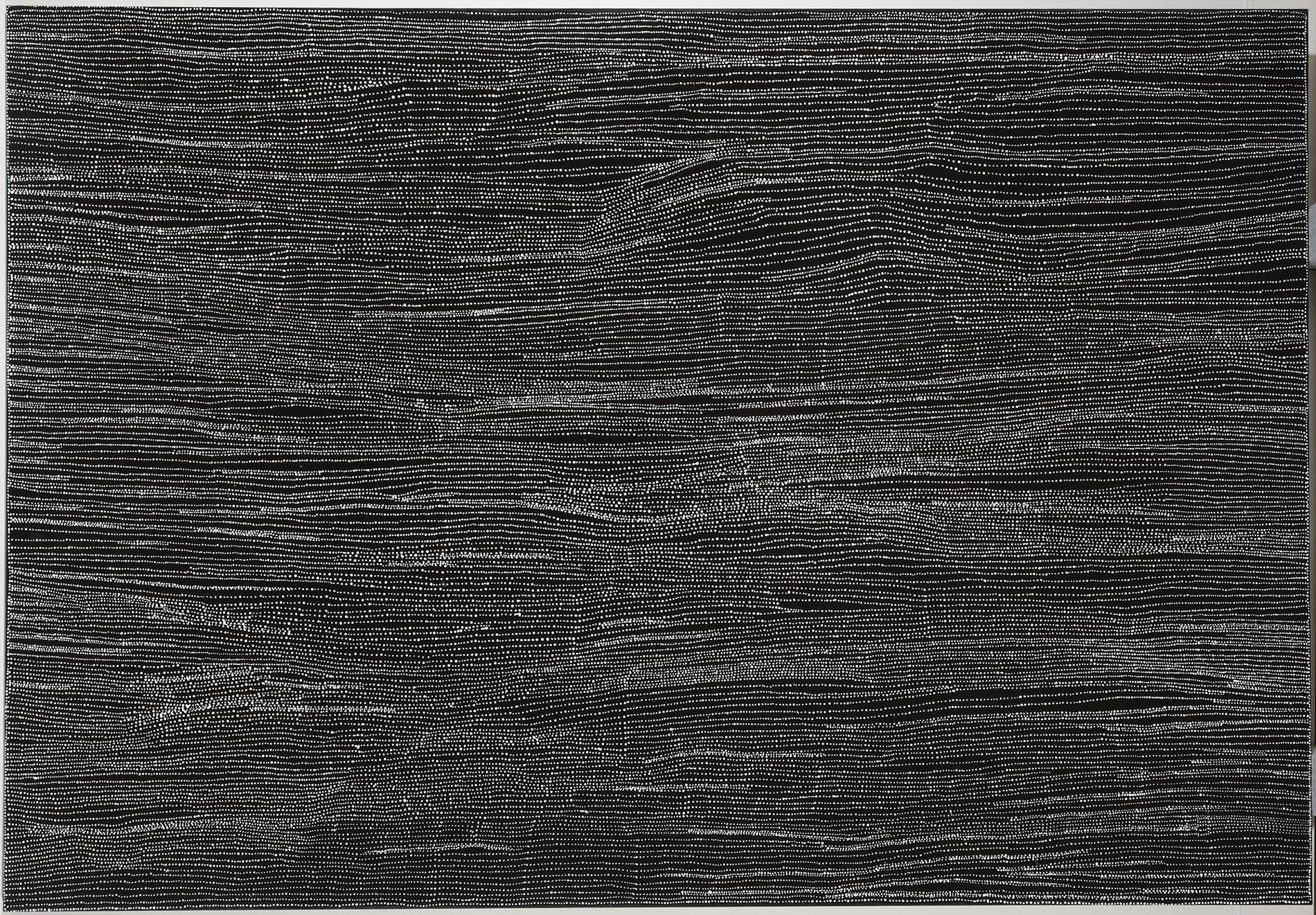Dorothy Napangardi, an Aboriginal artist of remarkable talent and vision
Born in the early 1950s at Mina Mina, a sacred site near Lake Mackay in the Tanami Desert, Napangardi's journey as an artist began in the late 1980s, during a period when Aboriginal art was beginning to gain significant recognition both within Australia and internationally. Her early works were distinguished by their intricate dotting techniques, a hallmark of Central Australian Indigenous art. However, what set Napangardi apart was her ability to transcend traditional motifs, transforming them into abstract, contemporary masterpieces.

Sandhills, Dorothy Napangari, 2009
A key aspect of Napangardi’s (and many other desert painters’) practice is that she made narrative, representational paintings. The intricate dots that cross the painting trace the movements of her women ancestors as they danced their way through the landscape. Although there is a tendency with Aboriginal art to see abstraction, it is truer to think of works like Sandhills as representational. The painting is a detailed document of country, of the many creation stories embedded in that country, and – perhaps the most singular achievement of Napangardi’s Mina Mina paintings – the action of moving through it. With her sure yet delicate hand, her encompassing bird’s-eye view and her rich custodial knowledge, Napangardi pays tribute to the enduring vitality of her country.
Anne Loxley is Senior Curator, C3West at the Museum of Contemporary Art Australia, Sydney.
Napangardi's celebrated body of work exemplifies her mastery of line and form. Her paintings are visual narratives of the ancestral journeys and stories of the Warlpiri people, often depicted through a mesmerising monochromatic palette that creates a sense of movement and depth. Napangardi's innovative use of negative space and finely detailed dotting techniques draw the viewer into a meditative exploration of Country and Dreaming, showcasing her deep connection to her land and culture.
Napangardi's art is a reflection of the spiritual bond between the Warlpiri people and their environment. Through her paintings, she communicates the stories, knowledge, and wisdom passed down through generations, offering a glimpse into the rich tapestry of Indigenous Australian life. Her ability to convey complex cultural narratives in a visually stunning and accessible manner has made her work an invaluable part of the dialogue surrounding contemporary Aboriginal art.
Throughout her illustrious career, Dorothy Napangardi received numerous accolades, including the prestigious National Aboriginal & Torres Strait Islander Art Award in 2001. Her works have been exhibited in major galleries and museums across the globe, cementing her reputation as one of the leading figures in the world of contemporary Indigenous art.
Napangardi's legacy extends beyond her individual achievements. She has inspired countless artists and has played a crucial role in the preservation and promotion of Warlpiri culture. Her innovative approach to art has opened new avenues for the expression of Indigenous identity and has contributed to the broader appreciation and understanding of Aboriginal art and culture.
Reflecting on the life and work of Dorothy Napangardi, it is evident that she was not only a gifted artist but also a cultural ambassador for her people. Her paintings are a testament to the resilience, creativity, and spiritual depth of the Warlpiri people. Through her unique vision and artistic mastery, Napangardi has left an indelible mark on the world of Aboriginal art, ensuring that the stories and traditions of her people will continue to inspire and captivate audiences for generations to come.







